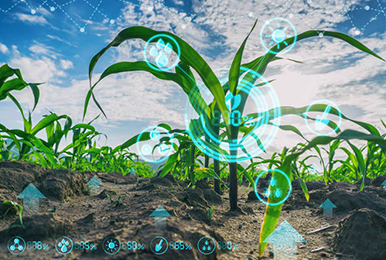The wireless soil moisture sensor adopts the international new generation FDR measurement method, which can reach an accuracy of less than 3%. The electromagnetic non-contact measurement method, the soil moisture sensor will not drift with time, which greatly enhances the stability of the product and extends the service life.
One of the critical factors that influence crop growth and productivity is soil moisture. Optimal moisture levels in the root zone are essential for nutrient uptake, plant growth, and stress tolerance. However, traditional methods of soil moisture monitoring are often labor-intensive, time-consuming, and prone to errors. To overcome these challenges, wireless soil moisture sensors have emerged as a revolutionary solution, providing accurate real-time data and enabling farmers to make informed decisions.

Wireless Soil Moisture Sensors: A Game-Changing Technology
Wireless soil moisture sensors offer several advantages over traditional monitoring methods. Firstly, they provide non-invasive, real-time data acquisition, eliminating the need for manual sampling and laboratory analysis. This saves time and reduces costs while providing accurate data on soil moisture levels in different areas of the field.
Moreover, wireless soil moisture sensors are convenient to install and use, making them accessible to farmers of all scales. These sensors consist of probes that are inserted into the soil, which communicate wirelessly with a central station or network. This system enables farmers to monitor soil moisture levels from a distance, reducing the need for physical field checks.

Smart Irrigation: Precision Agriculture at its Best
Wireless soil moisture sensor allow farmers to apply water more efficiently, reducing input costs while improving crop yields. Smart irrigation practices integrate real-time data from soil moisture sensors with weather forecasts and crop evapotranspiration rates, enabling farmers to apply water when and where it is needed most.
With wireless soil moisture sensors, farmers can monitor the moisture levels in specific areas of the field and adjust irrigation accordingly. This targeted approach maximizes water utilization, prevents over- or under-watering, and minimizes water stress in plants. Moreover, by implementing smart irrigation practices, farmers can reduce energy consumption, conserve water resources, and promote sustainable agriculture.
Revolutionizing Farm Management
Wireless soil moisture sensors provide farmers with valuable insights into their crop management practices. The ability to access real-time data on soil moisture levels enables farmers to make informed decisions about irrigation scheduling, timing of planting and harvesting operations, and the use of soil amendments.
Furthermore, wireless soil moisture sensors facilitate precision agriculture practices, enabling farmers to analyze soil moisture levels over time and detect trends. This information can be used to identify areas of the field that may require additional attention, such as those prone to waterlogging or drought stress. By detecting potential problems early, farmers can take corrective actions before they escalate, leading to improved crop health and increased yields.
Conclusion
Wireless soil moisture sensors are transforming agriculture by providing accurate, real-time data on soil moisture levels. This technology enables farmers to make well-informed decisions about irrigation scheduling, promoting water conservation and sustainable agriculture practices. Smart irrigation practices based on wireless soil moisture sensors also improve crop growth, reduce input costs, and increase yields. Additionally, these sensors provide valuable insights into farm management practices, facilitating precision agriculture and improving overall productivity and profitability. With further advancements in wireless sensor technology, the future of agriculture looks brighter than ever before.
